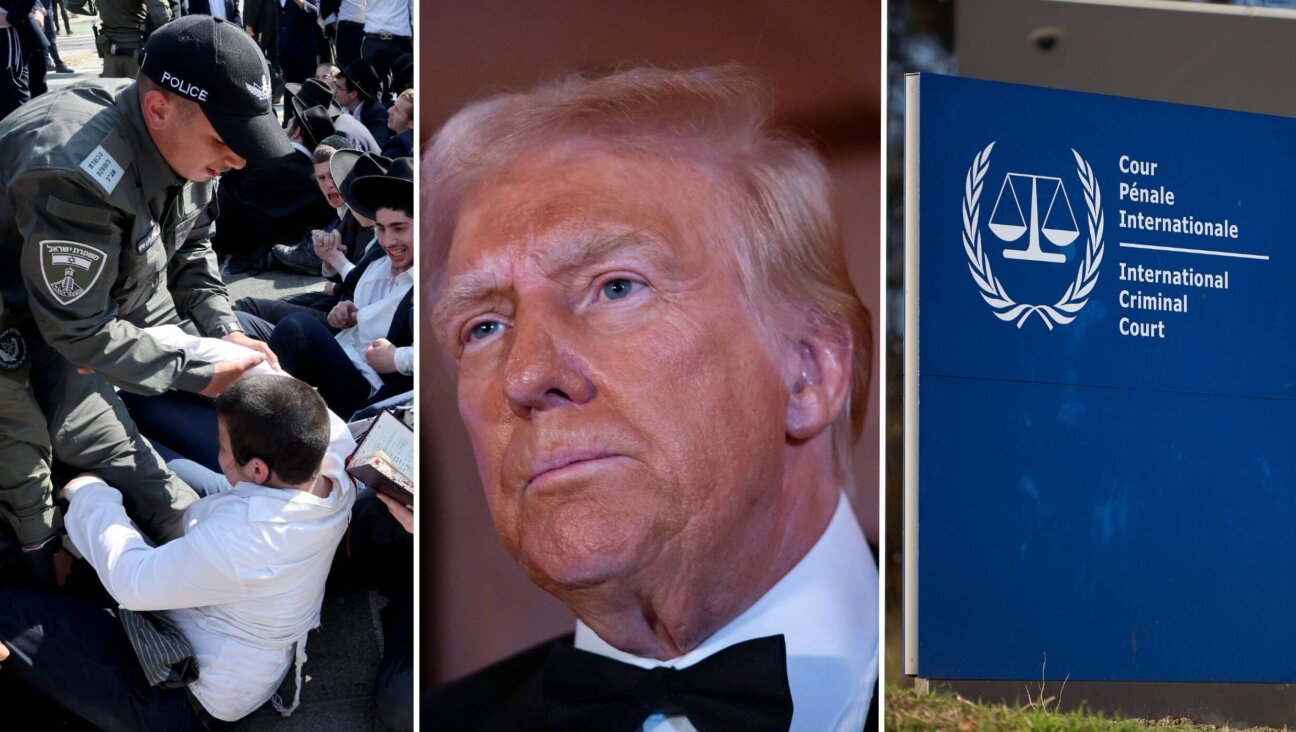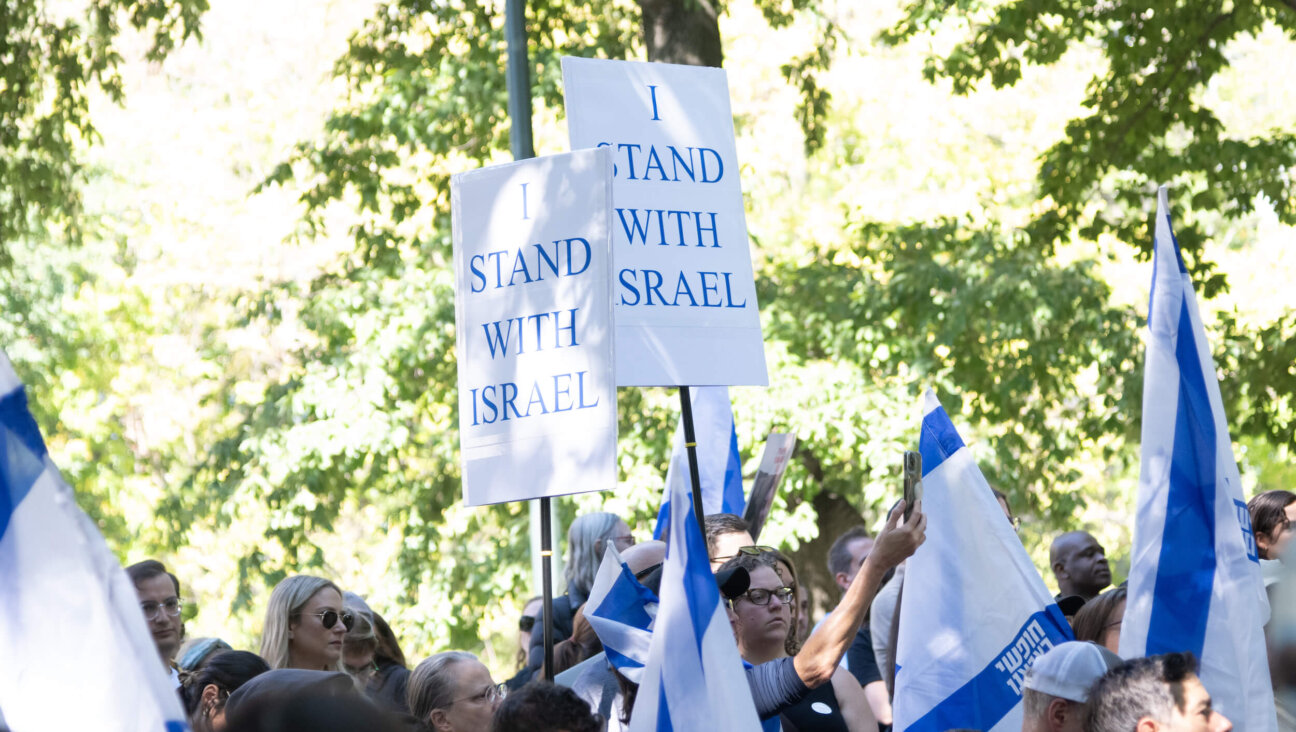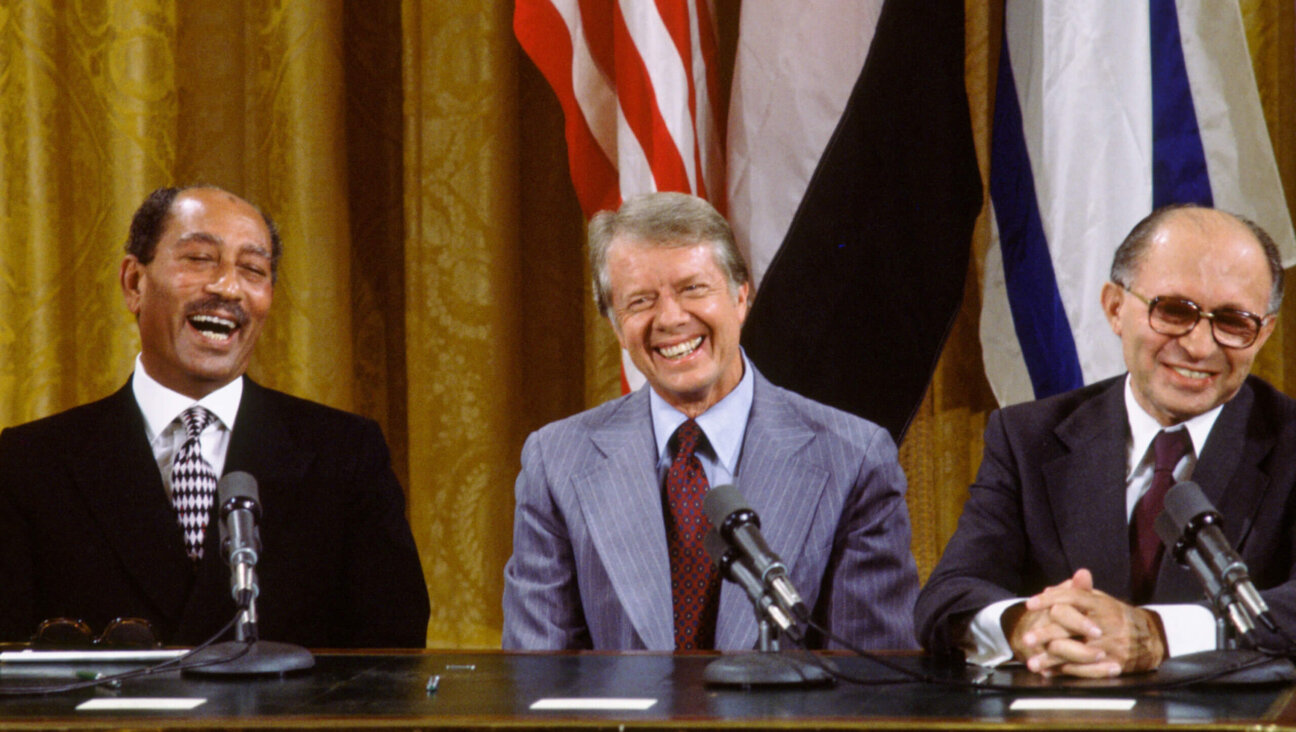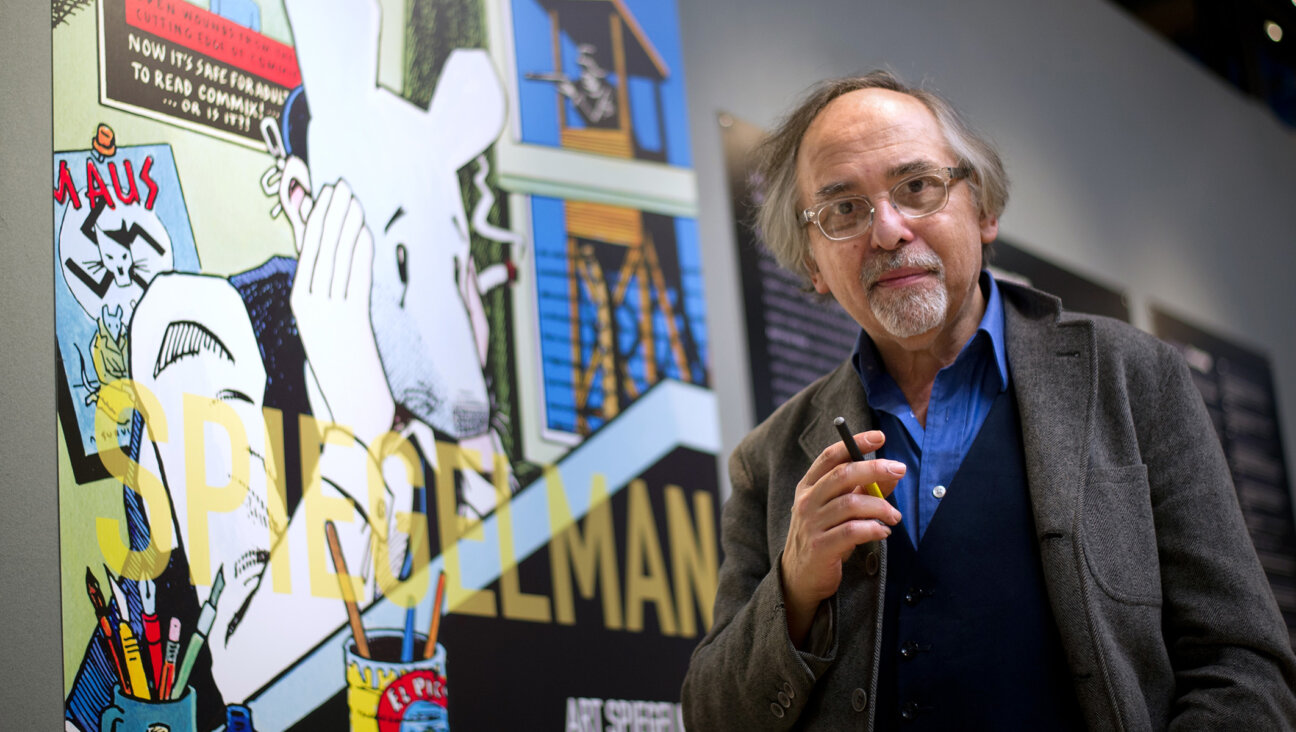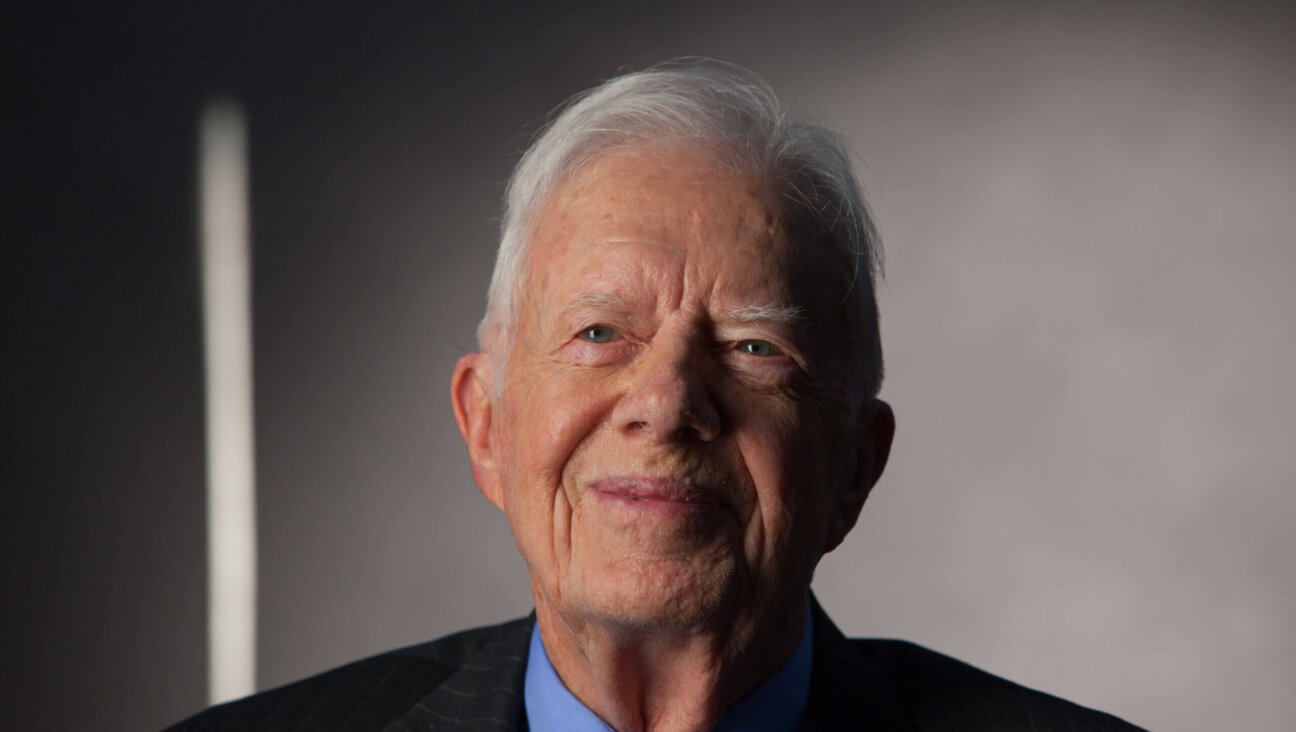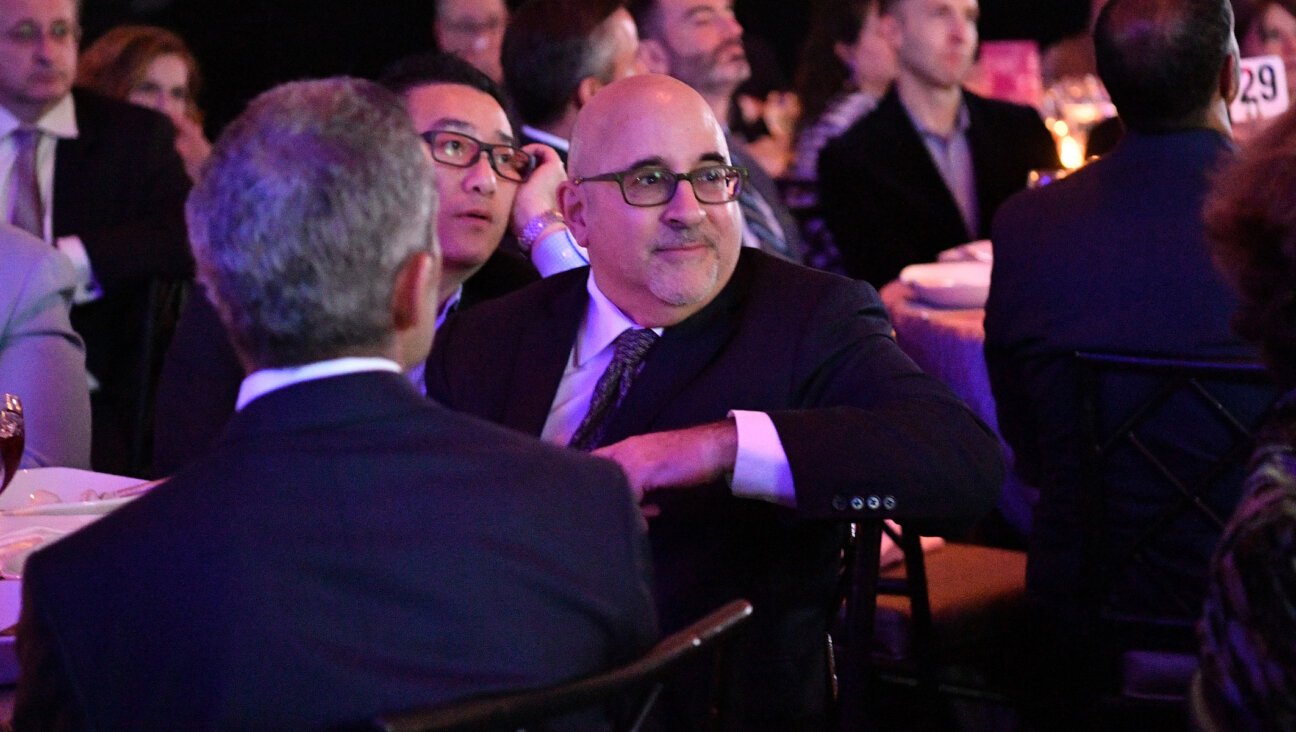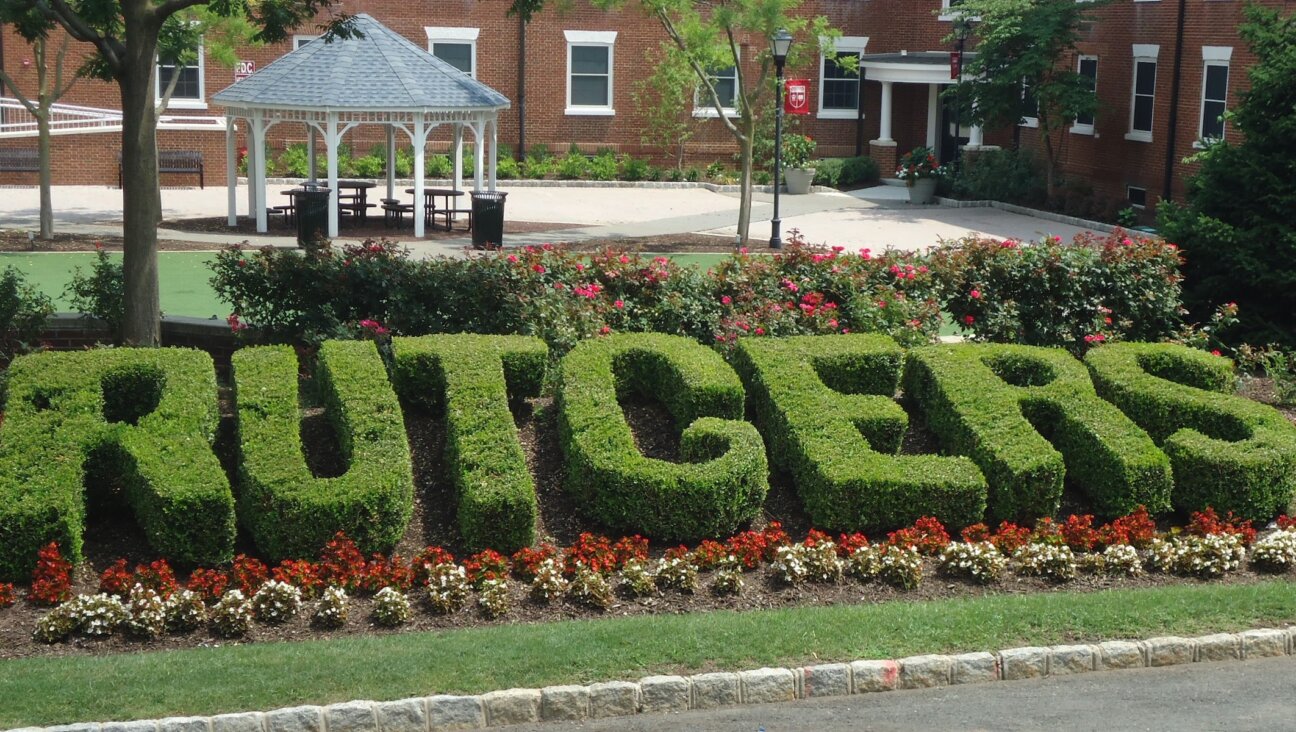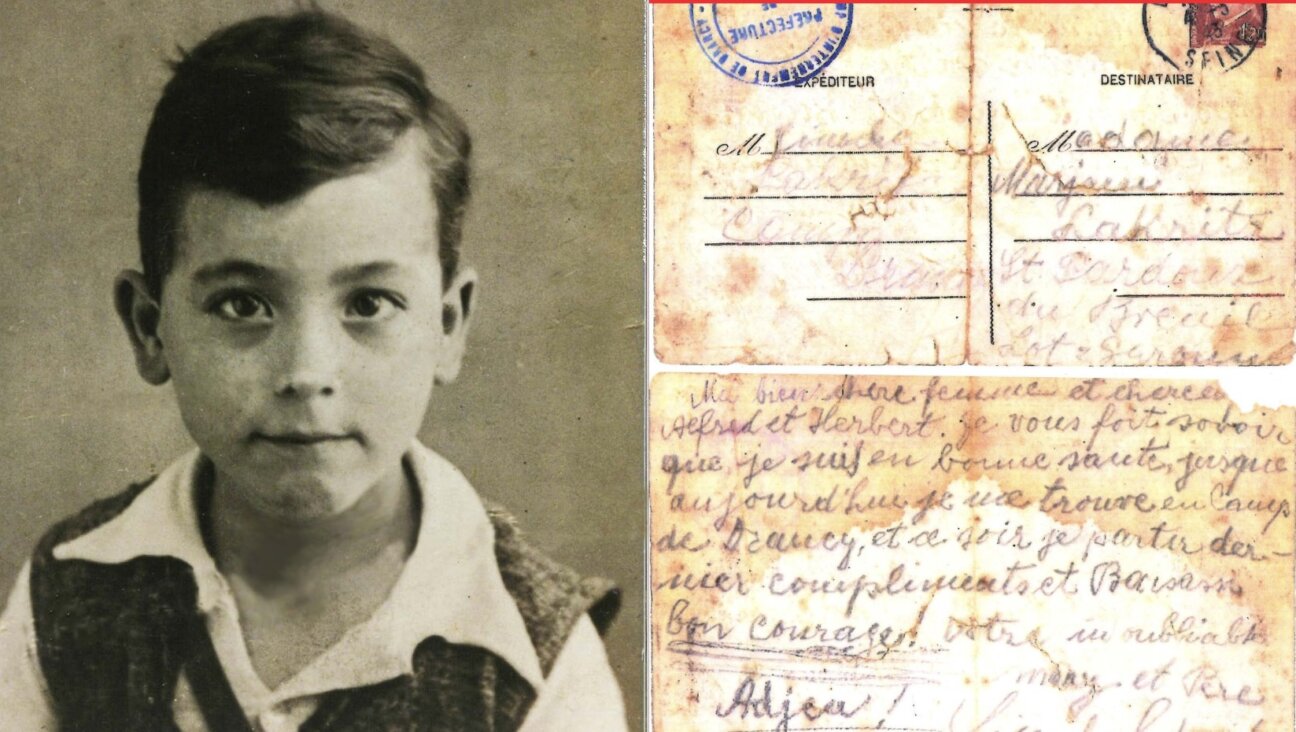When the Two-State Solution Collapsed

Trust Me: A vision that moves from occupation to cooperation. Image by Lior Zaltzman
The proverbial definition of insanity, doing something over and over again and expecting a different outcome, seems like a good way of explaining the “peace process” that the Israelis and Palestinians have been engaged in for more than 20 years. Time and time again the Israeli and Palestinian leadership have been forced to negotiate the same general plan; time and time again they have failed.
At the heart of the recurring failure is the aversion to addressing the most contentious issues first. Mutual recognition, borders, refugees, Jerusalem and water rights have all been pushed away, to be dealt with at some undetermined point in the future. One almost wonders what in fact the negotiating parties have been talking about.
But if failing meant only going back to the starting point, we could probably continue the ritual cycle of negotiation forever. But if this past year taught us anything, between the failed talks of the spring and fighting in Gaza this summer, it was that Israelis and Palestinians are not stuck. That would imply a status quo to which they can return. Instead there is a dangerous, violent, steep and slippery slope toward an abyss.
But in this past year, an increasing number of committed thinkers and activists have begun articulating another way, one that might break this now useless pursuit of a two-state solution, and envision instead another way forward.
Those who have so far professed their support of a binational state have offered so far little substance. But that’s why for the past year my organization, Israel-Palestine: Creative Regional Initiatives, a 27-year-old binational think tank, has led a group of Israeli and Palestinian experts to find out whether any alternative vision can be made realistic.
We are looking for a paradigm shift away from the classic two-state solution — replete with its walls, fences, expulsions, restrictions and denials of rights, attachments and access — and have moved toward a model of two sovereign nation states that offer full freedom of movement and access between them, an Israeli-Palestinian union.
The vision rests on five underlying principles.
1) Israelis and Palestinians are both deeply connected to all of historical Palestine or Eretz Israel.
2) Jews and Arabs live side by side, mixed in this land: 1.5 million Palestinians in sovereign Israel, 300,000 Palestinians in Israeli-controlled Jerusalem, 350,000 Jews live in the occupied West Bank.
3) Arabs and Jews, Israelis and Palestinians, have been involved in what has been a national struggle for more than a century. This struggle is currently gaining religious characteristics.
4) More than 90% of the holiest sites to the Jewish people are located in the West Bank, what Jews call Judea and Samaria — from the Cave of the Patriarchs in Hebron in the South, through Rachel’s Tomb in Bethlehem, the Old City of Jerusalem, Shilo, Beit El, up to Joseph’s tomb in Nablus.
5) One hundred percent of the original Palestinian refugees come from cities, towns and villages that are today, whether or not they still exist, within what is internationally recognized as Israel within the 1967 border.
The plan preserves the core elements of a two-state solution that remain essential for both parties. It will see two sovereign national states between the sea and the Jordan River: Israel on 78% of the land, and Palestine on 22%. Both sides thus receive national self-determination. Both sides can claim the revered city of Jerusalem as their capital — the West for Israel, and the East for Palestine.
The appropriate nature of an undivided city will be preserved, as one municipal authority will serve Jews and Arabs (like today, minus discrimination, plus just distribution of resources).
The vision will ensure that all people will have freedom of movement and access, and eventually even the right to live anywhere in the land. To maintain the national identity of each country, Israel and Palestine, the union will separate residency from citizenship. Residency relates to where the citizen of Israel or Palestine actually lives, and citizenship relates to nationality where one has national voting rights. This will help each side retain its national character based on the majority of its citizens.
This model is built on the establishment and then continuous deepening of cooperation between Israel and Palestine, through the work of many joint institutions. Some of this is already taking place, such as in the longstanding and successful cooperation between the Israeli and Palestinian security forces. The early days of the European Union offers one way forward, with its common markets for steel and coal resources. Israel and Palestine could similarly share ownership over electricity, water and natural resources. Foreign affairs would start off as the exclusive domain of each country but over time could move toward a more unified approach.
This is a vision that opposes uprooting settlements, while favoring a Palestinian right of return with incremental access beyond the Palestinian state. To a certain extent, it turns a de facto troubling and wrong situation of occupation and oppression into a de jure situation of nationhood, cooperation and interdependence that can be accepted. It creates a positive sort of cognitive dissonance.
We have been working on hammering out the details on the most essential issues: citizenship/residency, Jerusalem, right of return, borders and security. A number of working groups organized by IPCRI have produced a book containing 250 pages of analysis, comparisons, details and ideas as to how to reach such a union; it is not a full blueprint. It needs more work and, most important, a wide audience with genuine, critical feedback. But it is, we believe, a much needed serious attempt at shaking off the thick layer of dust over what has become a dangerous deadlock and lose-lose stalemate.
Dan Goldenblatt is the Israeli co-director of IPCRI.
A message from our Publisher & CEO Rachel Fishman Feddersen

I hope you appreciated this article. Before you go, I’d like to ask you to please support the Forward’s award-winning, nonprofit journalism so that we can be prepared for whatever news 2025 brings.
At a time when other newsrooms are closing or cutting back, the Forward has removed its paywall and invested additional resources to report on the ground from Israel and around the U.S. on the impact of the war, rising antisemitism and polarized discourse.
Readers like you make it all possible. Support our work by becoming a Forward Member and connect with our journalism and your community.
— Rachel Fishman Feddersen, Publisher and CEO







